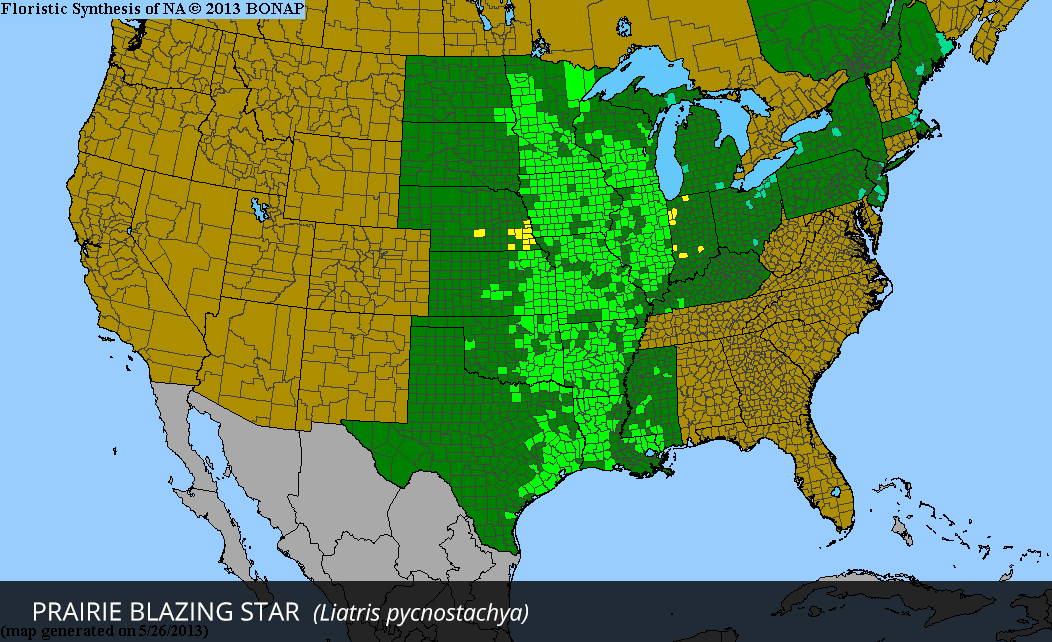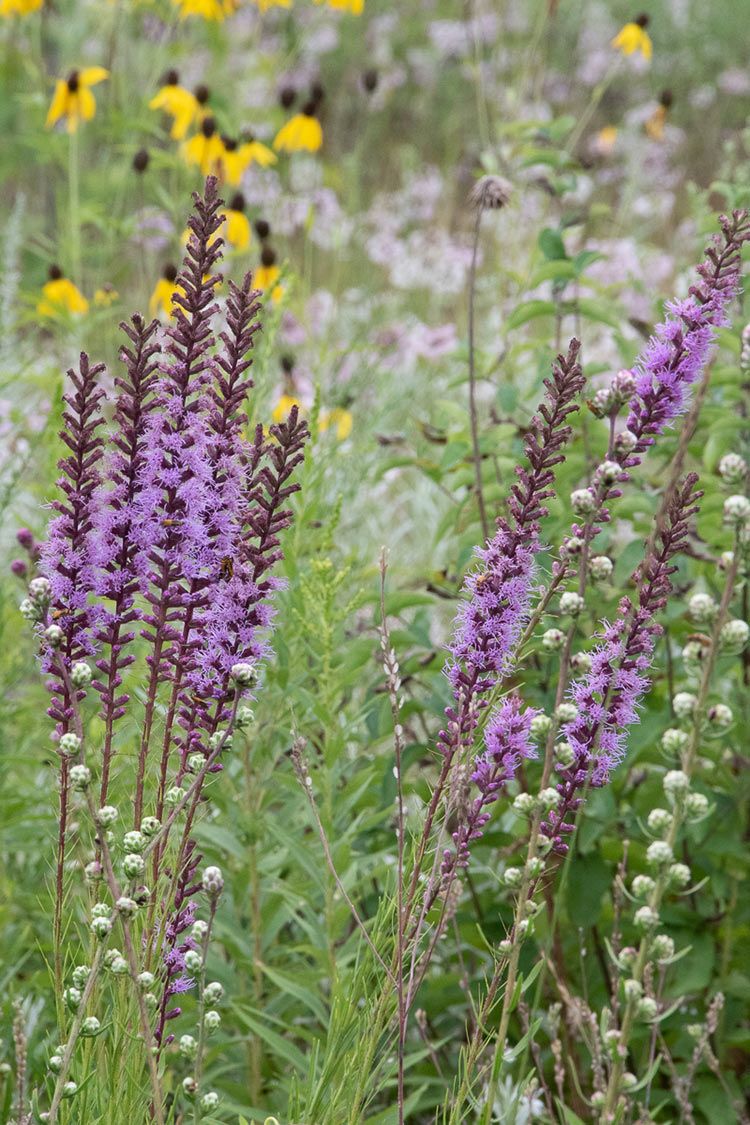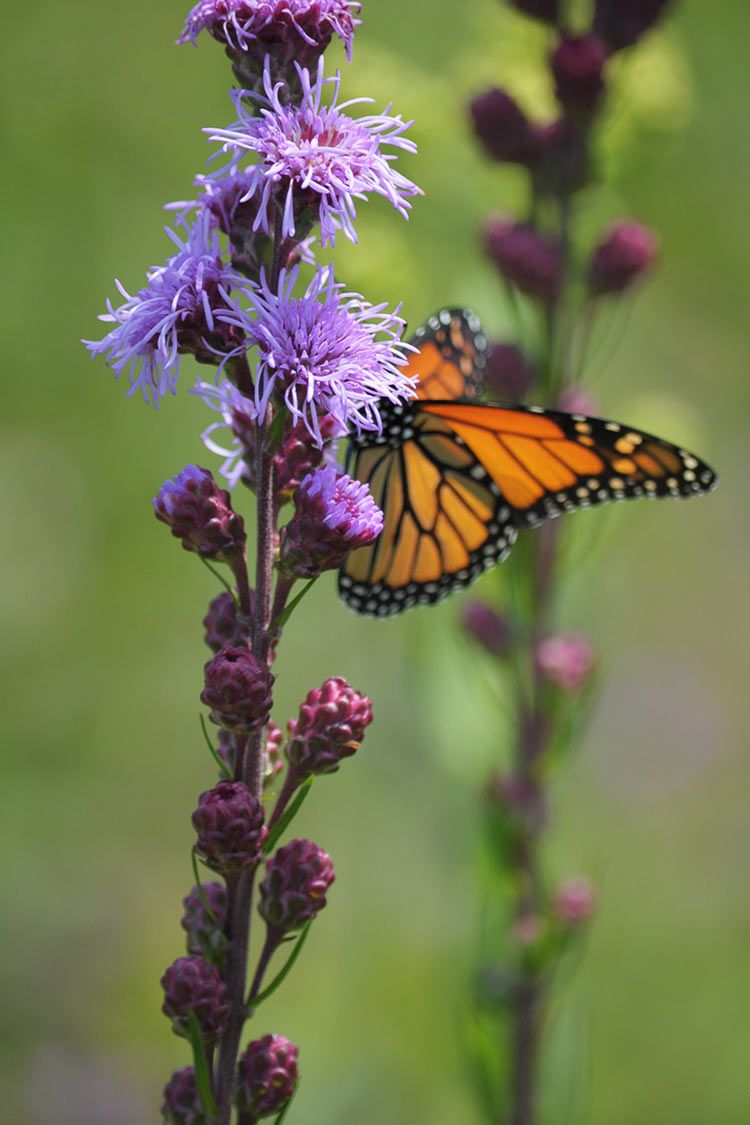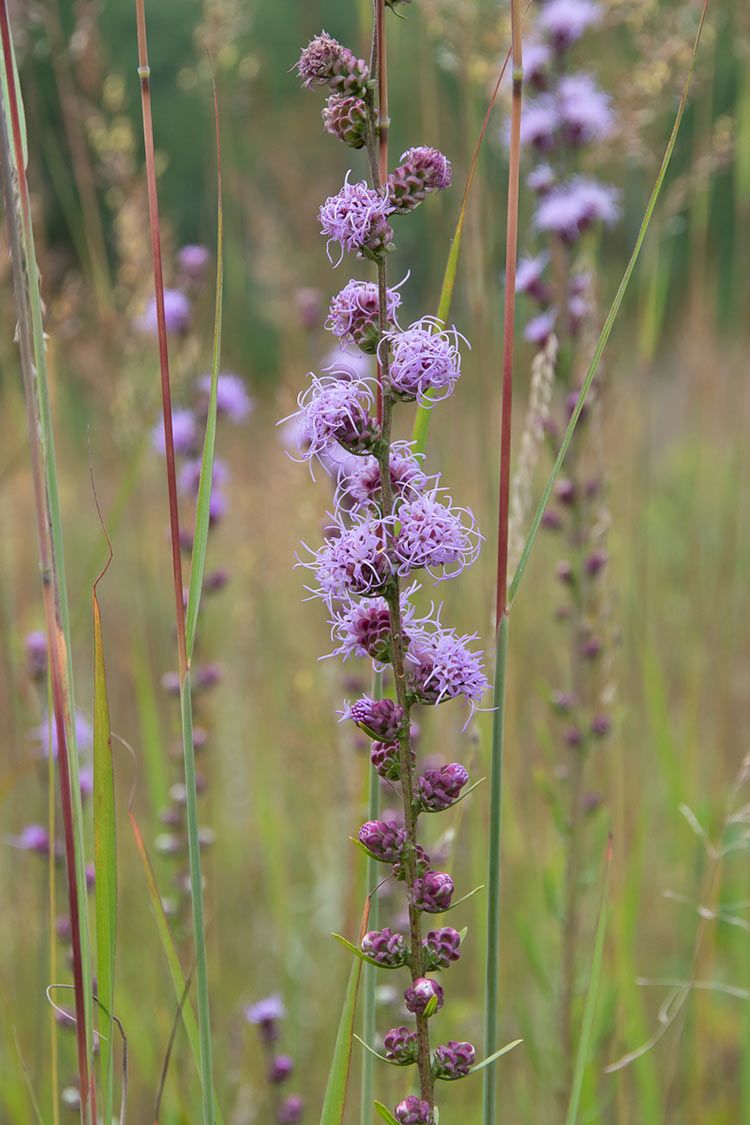Prairie Blazing Star
Prairie Blazing Star is an iconic prairie flower with a spectacular spike of tightly bunched lavender flowers. The lavender tufted flowers begin blooming at the top and work their way down the …
| Soil Type | Clay, Loam, Sand |
|---|---|
| Soil Moisture | Medium, Moist |
| Sun Exposure | Full Sun |
| Height | 3' - 5' |
| Bloom Color | Lavender, Pink, Purple |
| Bloom Time | July, Aug |
| Spacing | 6" - 1' |
| Zones | 3, 4, 5, 6, 7, 8, 9 |
| Root Type | Corm |
| Benefits | Birds, Butterflies, Pollinators, Hummingbirds, Host Plant, Deer Resistant |
| Seeds per Oz | 12000 |
| Propagation Treatment | Moist Stratification |
| Days to Moist Stratify | 30 days |
| Direct Sowing Time | Spring, Fall |
Prairie Blazing Star is an iconic prairie flower with a spectacular spike of tightly bunched lavender flowers. The lavender tufted flowers begin blooming at the top and work their way down the single stem.
Liatris pycnostachya grows well in both moist soils and in clay. Good plant growth requires both sun and adequate moisture. Dry conditions can cause leaf loss and too little sun may cause twisted growth. Blooming July through August it is excellent in perennial borders, prairie gardens or naturalized areas. It looks great with other natives including Purple Coneflower, Royal Catchfly, Rudbeckia triloba, Rattlesnake Master, Wild Quinine and prairie grasses in formal or naturalized settings.
Popular with the pollinators, butterflies, bees and hummingbirds are all likely to visit Prairie Blazing Star. Plants in the Liatris genus are known to host numerous small moths, such as the Glorious Flower moth (Schinia gloriosa), Three lined Flower moth (Schinia trifascia), Wavy-Lined Emerald (Synchlora aerata), and the Blazing Star Borer moth (Carmenta anthracipennis).







